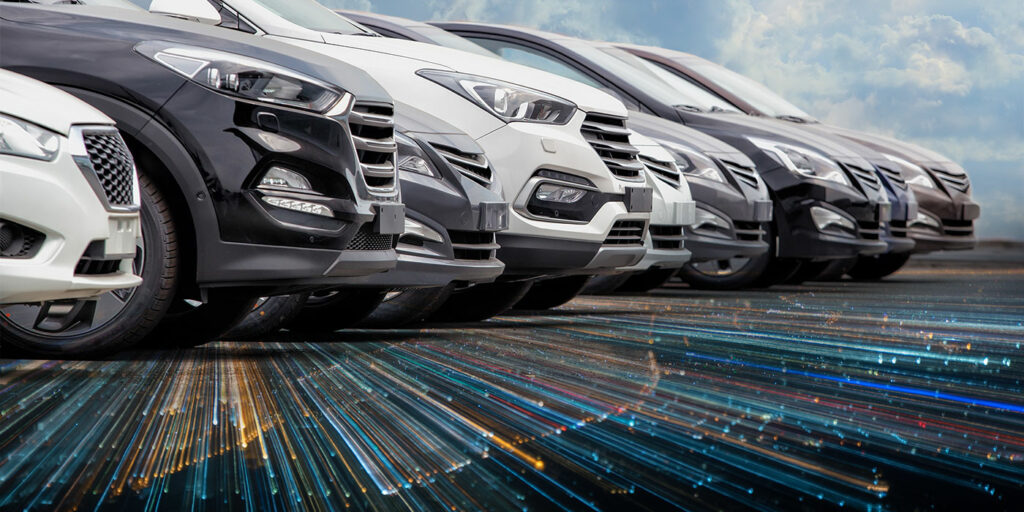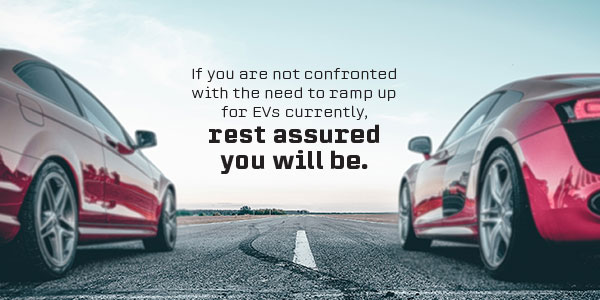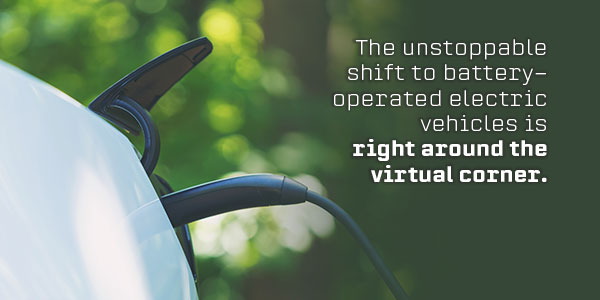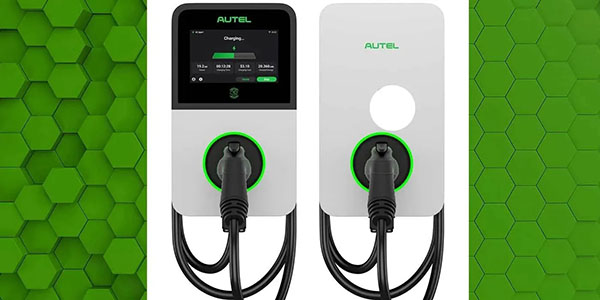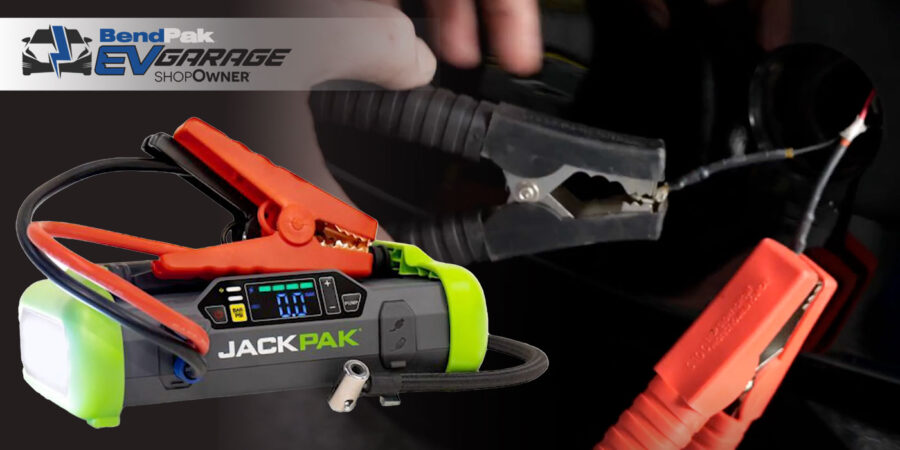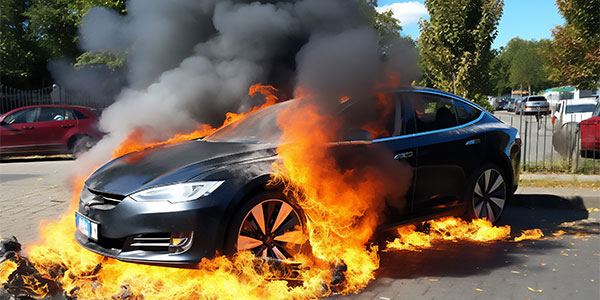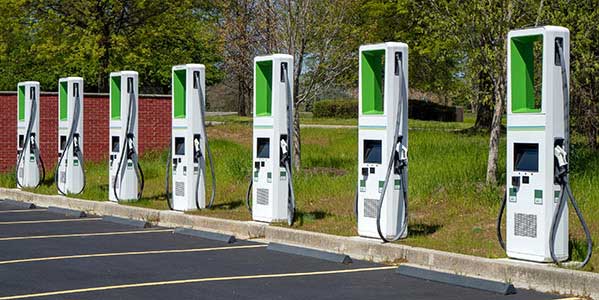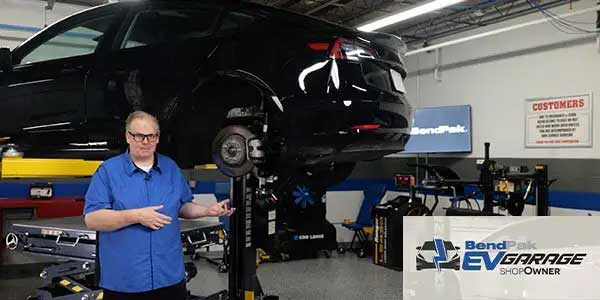Over the past decade, we have seen a whirlwind of technological advances that have changed our lives. Vehicle technology and the equipment required for maintaining and repairing it has just been the tip of the iceberg.
Hello, Alexa
This past Father’s Day, my twin sons gave me an Amazon Echo smart speaker, and I must admit that I was blown away by what “Alexa” can do. She can provide music of your choice just by asking, including a specific song and artist or the genre of music you seek. She can provide other services too, like reminding you to do certain things at a specific time on a specific day – such as taking your vitamins – or monthly, such as changing your air conditioner’s filter. Being “old school,” as my sons like to call me, I find myself saying “please” and “thank you” to Alexa for her assistance as if she were a real person on the other end of the line.
As I understand it, Alexa is a device that records your voice and sends it over the internet/cloud to Amazon’s Alexa Voice Services (AVS), which translates the recording into language and commands it understands. Then, the system sends a response back to your device. Furthermore, it records, schedules and responds to your questions and requests when you would like it to. The fact that this technology exists still blows me away. Of course, there are concerns about “Big Brother” having access to private and personal information while listening in on your casual conversations.
Artificial intelligence (AI) has just begun to become a reality and will continue to evolve and have an increasing impact on our daily lives, including self-driving cars and trucks.
Electric Vehicles
Another technological innovation that is already here, albeit in its infancy stage, is the electric vehicle (EV). Repairers have become somewhat familiar with hybrid-electric vehicles (HEVs), which are the precursor to fully battery-operated electric vehicles. The unstoppable shift to battery-operated EVs is right around the virtual corner.
Major automakers are launching a range of light- to heavy-duty EV models and have made bold promises to transition away from fossil fuels. There are several manufacturers currently offering EVs including Audi; BMW; Chevrolet; Ford; GM; Jaguar; Hyundai; Kia; Mini; Nissan; Porsche; Polestar; Tesla; Volvo; and Volkswagen. Numerous others are expected in the next five years, including Aspark, Lucid, Fisker, Mercedes-Benz and Hyundai. For example, Volvo recently announced that it will be phasing out any car in its global portfolio with a combustion engine by 2030. GM announced in January that it intends to eliminate tailpipe emissions from new light-duty vehicles by 2035.
The electric vehicle is here and will continue to advance and grow in use, while one day in the not-too-distant future, the gasoline-operated engine will be destined for museums and private collections following the way of the steam engine.
Are You Ready?
So…the question is, is your shop ready for the EV evolution?
I would wager that unless you have manufacturer-trained and certified technicians working for you, you’re likely ill-prepared to perform significant repairs on EVs. The days of specialization are upon us, and OEM training and certification is becoming more and more of a requisite.
MSOs are preparing to meet the continually increasing demand for EV repair. Most repairers have been adapting to hybrid vehicles for the past decade or so, but the shift to battery-powered vehicles lags behind. Repairers need to view getting up to speed for EVs much like eating an elephant: one bite at a time. Otherwise, they’ll fall behind and have to invest heavily in training and equipment in a short period of time while losing repair opportunities in the interim.
The Biden Administration in particular has made EVs a centerpiece of their effort to “Build Back Better” to help combat climate change. The Fed’s goal is to have 100% clean and zero-emission vehicles for federal, state, local and tribal government fleets – including U.S. Postal Service vehicles – no later than 2035.
During this EV evolution, there will be significant growth in rapid charging stations to meet ever-growing demand. Meanwhile, increased government regulation will no doubt tighten fuel efficiency standards and encourage the auto industry to shift away from internal combustion fossil fuel-powered vehicles to BEVs and other zero-emission models.
Failing to Plan
Benjamin Franklin once said, “If you fail to plan, you plan to fail.”
Getting ready for EVs will include acquiring the necessary training and equipment needed to make safe repairs. Ongoing training will be paramount to meet the growing demand and avoid potential liabilities within – as well as outside – the repairer’s facility.
For the new car/truck dealer, the ramp-up is not as daunting as the investment will likely be applicable to only one or two specific manufacturers’ product lines. Independent repairers will need to be prepared to meet numerous manufacturers’ specific repair procedures and equipment. The advent of structural unitization (unibody) construction, on-board computerized systems, new materials and OEM repair mandates showed us that the long-term success of collision repairers will not be left to luck; success will be achieved through strategic planning and careful implementation to meet the need.
The EV need will first become prevalent in the large metro areas where infrastructure enables and supports it, and it will become more and more widespread as will recharging availability.
An Exciting Time
This is an exciting time in automotive history as the gasoline-powered vehicle has existed for the past 130-plus years and the collision repair industry will go through yet another transformation to meet the new and “electrifying” technology.
The changes will be significant regarding both the technology and design. EVs are based on what is known as the “skateboard platform” where the battery pack, drive units, suspension, braking and thermal systems are all below the height of the wheel, leaving the space above for the occupants and their belongings. This new technology will not only remove tailpipe emissions, it will also usher in newer and simpler designs that will be easier to manufacture and will prove superior, offering greater value to the consumer.
These new designs will require a change in repair procedures due to higher voltage, fewer parts and more module assemblies requiring additional activities and costs. EVs have fewer parts while offering greater performance and more spacious interiors.
While much of the high-voltage safety equipment and handling is currently common to all manufacturers, each manufacturer will no doubt have their own set of EV procedural and tooling requirements and certifications – just as specialized parts (i.e. rivets) and tooling were required when aluminum repair took off.
A Revolution
Collision repairers need to accept that the EV revolution is taking place and will continue to evolve. And, while EVs will not replace the 300 million combustible vehicles currently in use overnight, they will steadily grow over time. If you are not confronted with the need to ramp up for EVs currently, rest assured you will be. And it will be today’s decision when to begin eating that elephant that will dictate your future.
This will become a major challenge for repairers as many will still be updating their facilities, equipment and staff to deal with the currently-produced vehicles while also adding EV capabilities. Depending on one’s market, the EV niche will inevitably become the standard in the not-too-distant future.
Repairers need to give serious consideration as to when they’ll join the parade and whether they lead, jump on the bandwagon when it arrives or play catch up at the back of the parade.
If you spend your funds and energy to be prepared for the inevitable now, your dollar will go further than if you wait. Plus, you’ll be prepared to meet the demand when it presents itself. If you wait, you’ll likely pay more and lose potential opportunities until you can get up to speed to meet the need. These are the decisions that will separate the winners from the losers.

